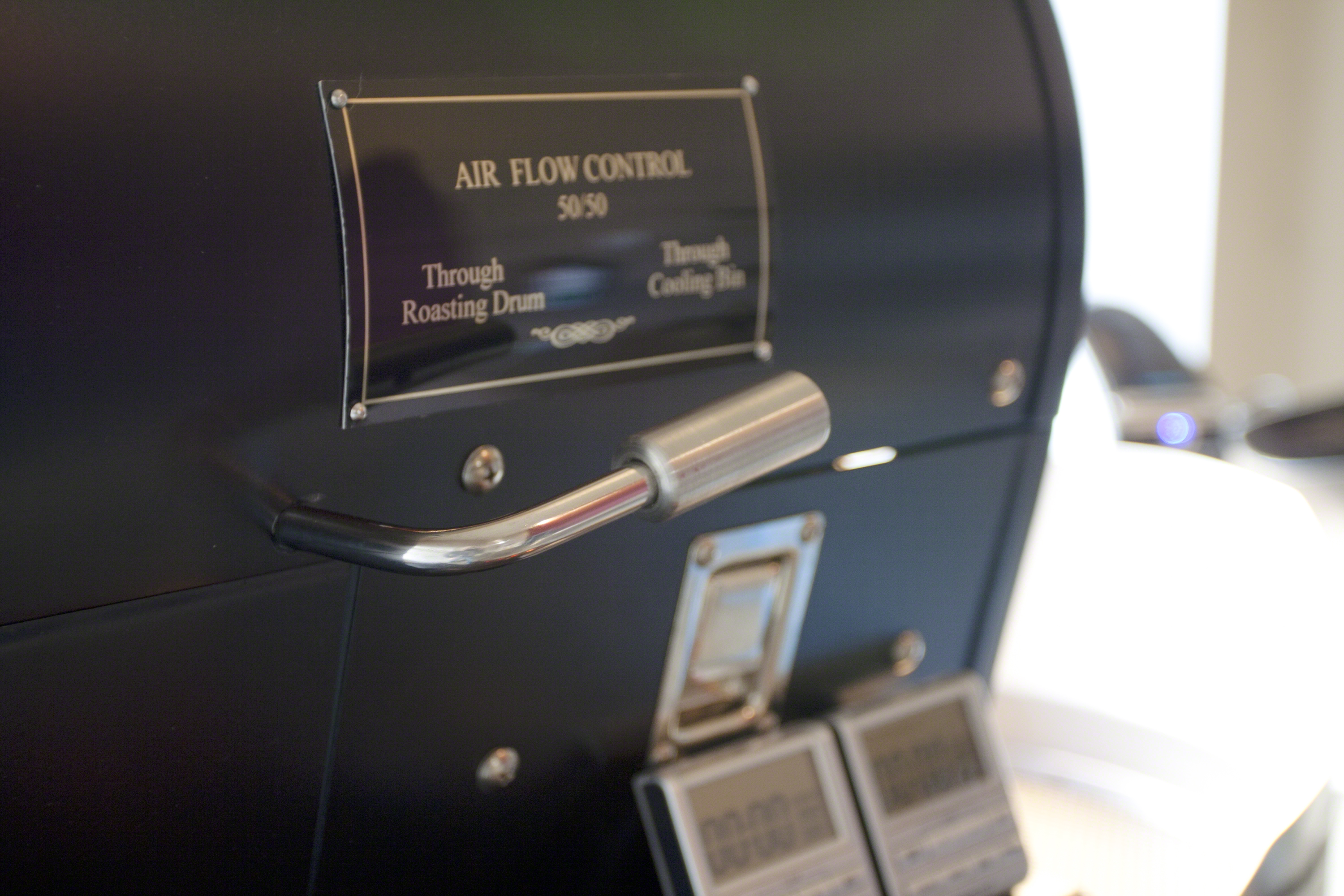Updated January 21, 2018

There is a recent post in the Home-Barista.com forums titled How Does Airflow Affect The Roast and as I got to thinking about airflow and the roast, I realized airflow and moisture go hand-in-hand. For the sake of this post, “moisture” means chemically unbound water either on the bean surface or water vapor in the drum.
Moisture affects the environment temperature and possibly the overall time of roast
Moisture acts as a heat buffer in the roaster; it absorbs thermal energy that could be used for other work, such as chemically altering (roasting) the beans. At elevated temperatures — especially above the boiling point — water vaporizes and can be removed from the drum with exhaust air. Therefore if we compare two roasts in which we keep everything identical except airflow, the roast with less airflow will proceed faster due to a higher environment temp*.
Airflow affects temperature and water activity
Increased airflow affects environment temperature by removing heated air from the drum and pulling in room-temperature air. If the roaster’s burner isn’t increasing the air temperature at a rate at least equal to the rate the fan is replacing heated air with room-temperature air, the roaster’s environment temperature will drop.
Airflow will also move water vapor into and out of the drum; it will pull in water vapor with the air outside the roaster and it will exhaust water vapor from inside the roaster. As the amount of water vapor increases in the system, the water vapor pressure increases, which increases the water activity. Conversely, reducing the amount of water vapor in the system reduces water vapor pressure and water activity.
Temperature and water activity both affect the rate of browning
Two of the most influential factors in non-enzymatic browning (the Maillard reaction) are temperature and water activity (Echavarría et al., 2012) An increase in temperature and/or water activity increases the rate of reactions occurring within the Maillard reaction. Conversely, a decrease in temperature and/or water activity decreases the rate of reactions.
Now let’s put it all together. Airflow and moisture levels (humidity) in a drum roaster are closely linked to one-another. In the drum of the roaster, airflow affects the humidity, which affects the temperature and water activity, which affects the rate of browning. Therefore, what you are trying to achieve with a given roast profile will determine how you adjust the airflow. If you want a fast ramp from the drying phase to first crack*, increased airflow could be one of the tools you use to achieve that. Or, if you are roasting beans with a high moisture content (such as fresh crop beans) and need to remove water vapor during the drying phase, a temporary increase in airflow can help.
See also: Understanding The Roast Profile
At the end of the day, airflow is another tool in your roasting toolbox.
- Echavarría, A. P., Pagán, J., & Ibarz, A. (2012). Melanoidins Formed by Maillard Reaction in Food and Their Biological Activity (4, Volume 4; Number 4, Volume 4). Food Engineering Reviews. https://link.springer.com/article/10.1007/s12393-012-9057-9
Value 4 Value
If you found this content useful, please consider supporting my work. I charge no set fee or price for providing this. You can help keep information like this openly accessible by matching the value you received in the content; value 4 value.Ko-fi / Bitcoin Wallet: 32SW9kcAsJdZvQKBazhLUZBSD9YS8DDqe8
